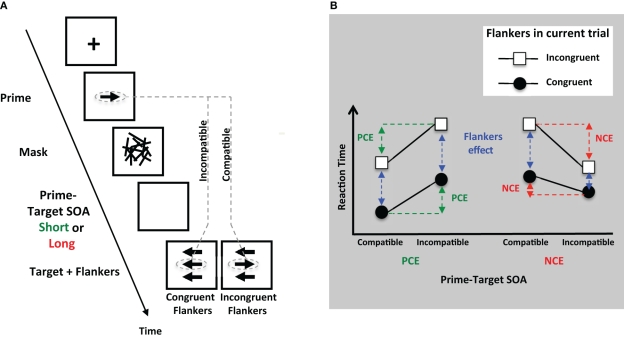Figure 5.
(A) Schematic illustration of the task in Boy et al. (2010b), which combines subliminal priming and flanker interference. If the stimulus onset asynchrony (SOA) between prime and target (response) cue is short (70 ms), a PCE in response times is found (green arrows in B). If the SOA is longer (180 ms), an NCE is found (red arrows in B). Compatibility refers to whether the direction of prime arrow and target (response) arrow is the same (compatible) or different (incompatible). Targets are flanked by arrows. If the flankers are congruent with the target, then response times are shorter than if flankers are incongruent (the flanker interference effect; blue arrows in B). 4-B. Results: for positive priming (PCE), the priming effect was additive with the effect of flanker interference. For the NCE, which measures subliminal inhibition, there was an interaction with flanker interference. This interaction did not occur for pre-stimulus control [data not shown here, see Boy et al. (2010b)].

